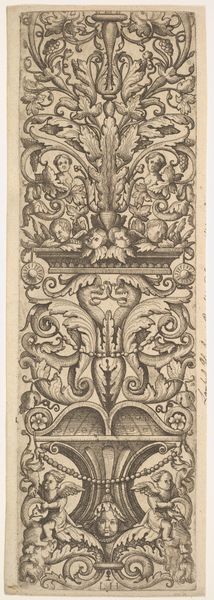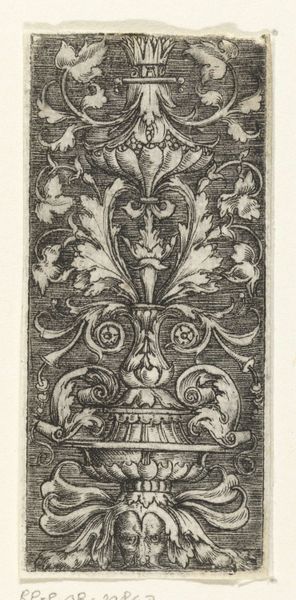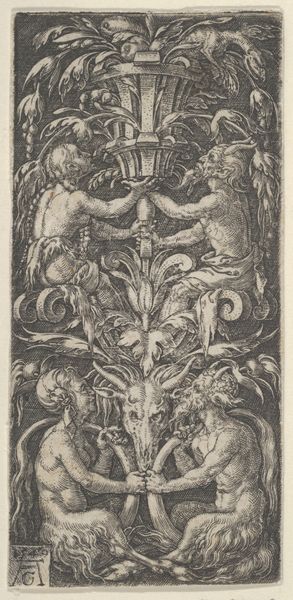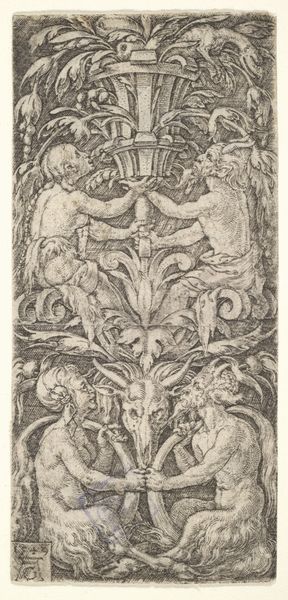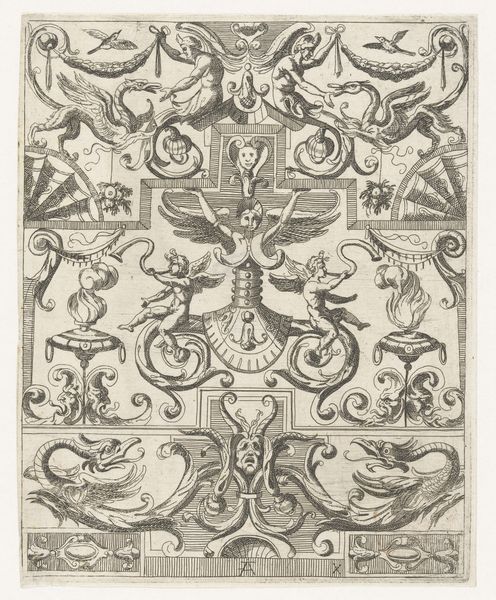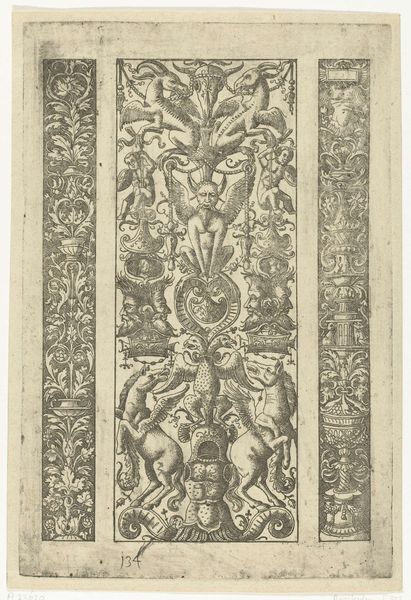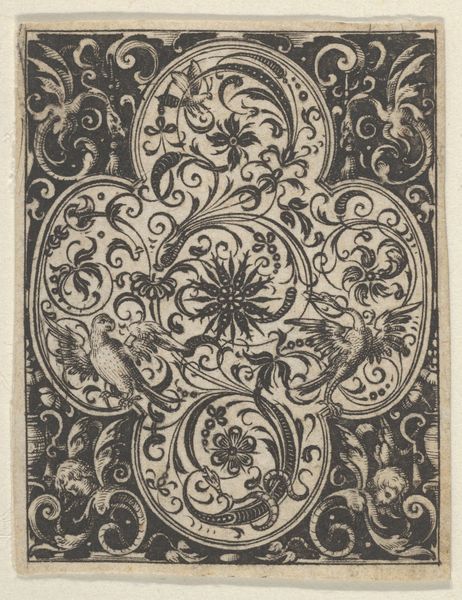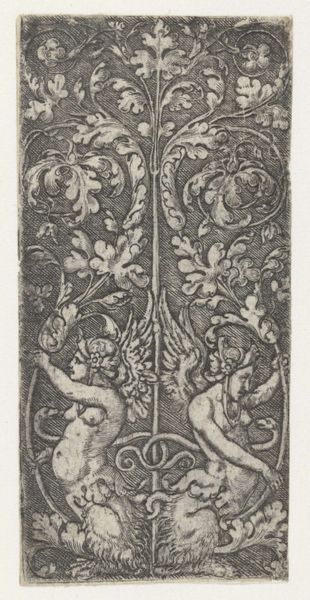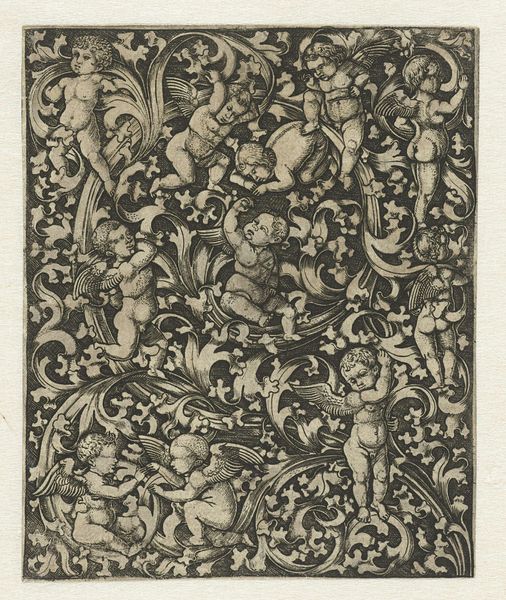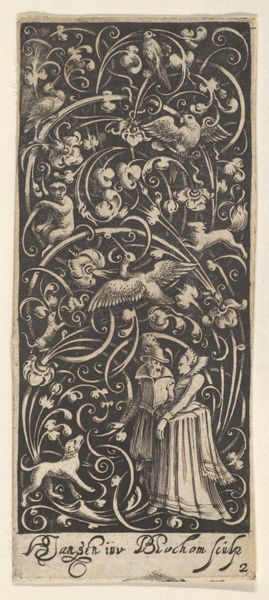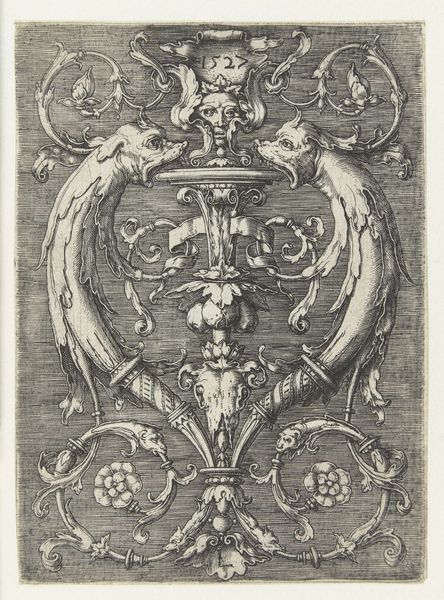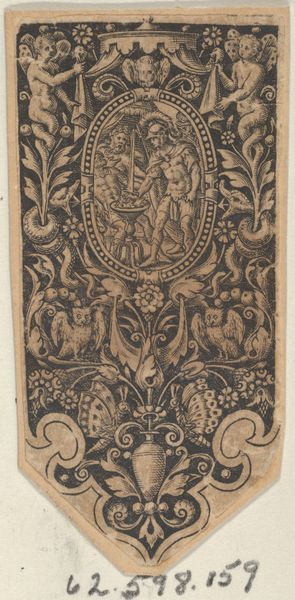
Vertical Panel with Inhabited Candelabrum Rising from a Cuirass 1553
0:00
0:00
drawing, graphic-art, print, engraving
#
drawing
#
graphic-art
# print
#
figuration
#
11_renaissance
#
geometric
#
line
#
northern-renaissance
#
engraving
Dimensions: Sheet: 5 5/16 × 1 3/4 in. (13.5 × 4.4 cm)
Copyright: Public Domain
Editor: Here we have Heinrich Aldegrever’s "Vertical Panel with Inhabited Candelabrum Rising from a Cuirass," an engraving from 1553. It's incredibly detailed. All those fine lines… almost overwhelming. What do you see when you look at this piece? Curator: I see a confluence of materials and meanings, of power and production. This engraving, made with metal tools on a metal plate, displays the art of the armourer and the graphic artist in dialogue. The very process—etching, biting with acid—echoes the destructive potential inherent in armor itself. How fascinating that martial prowess becomes ornament! Editor: So, it's not just decorative? Curator: Not at all. It reflects a specific social context. Consider the armor: no longer solely functional, but a display of wealth, status, a symbol of power being consumed as art. Notice the intricate floral designs emerging from the cuirass. What statement is Aldegrever making about the relationship between warfare, luxury, and artistic creation? Editor: It's interesting to think of this delicate print being born out of such a forceful medium as armor. And the candelabrum as this sort of…flourishing of conflict. Is that right? Curator: Precisely. The labor-intensive process of engraving mirrors the craftsmanship involved in creating the armor itself. Both demanded skill, time, resources. It elevates craft, the process of *making*, to the level of art. Where do we draw the line? Who determines what is worthy? Editor: That really shifts how I see this! I was initially focused on the composition, but now I'm thinking about the cultural values embedded in the object itself and its making. Curator: Exactly! It's about decoding the social relationships, labor practices, and consumption patterns inherent in the artwork. To think about materials and process. That reveals hidden histories, doesn’t it?
Comments
No comments
Be the first to comment and join the conversation on the ultimate creative platform.
